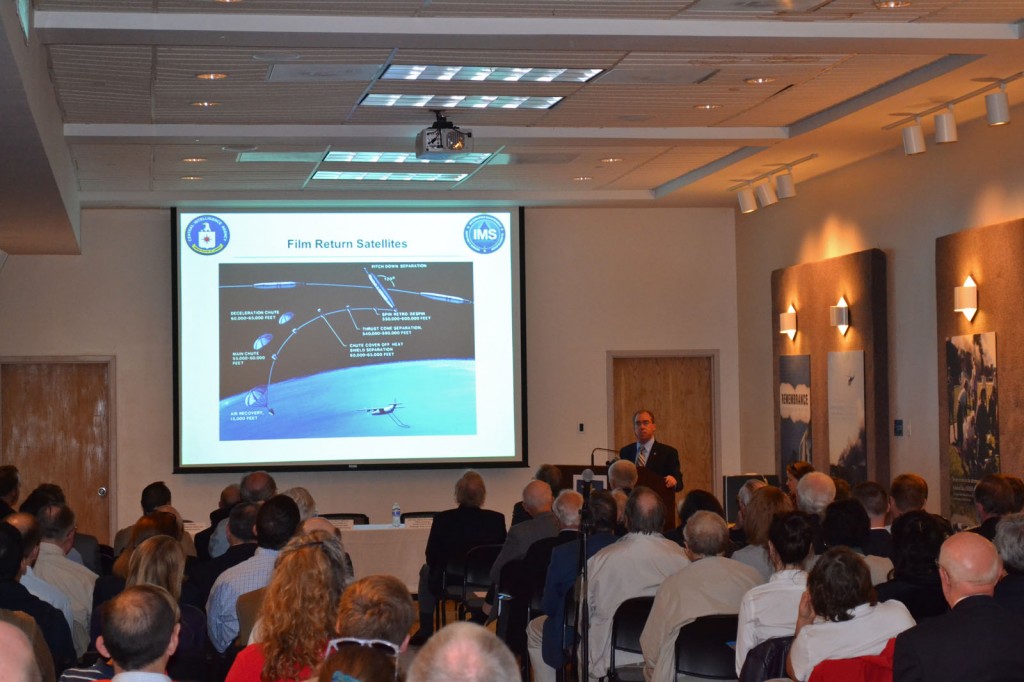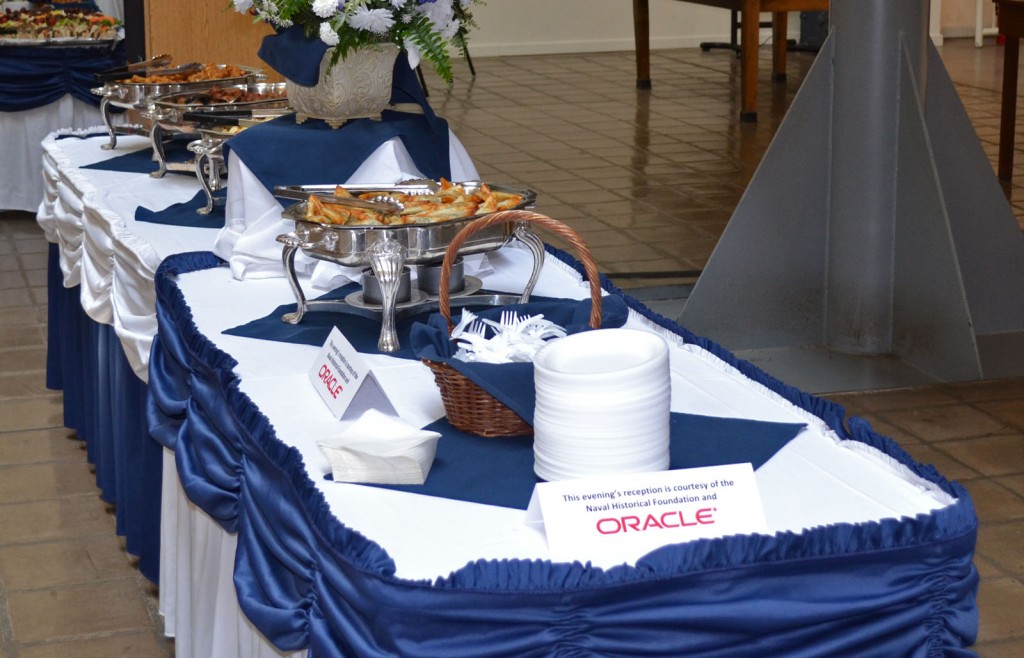 Last night, the US Navy Museum hosted a special panel presentation entitled “An Underwater Ice Station Zebra: Recovering a Secret Spy Satellite Capsule from 16,400 ft Below the Pacific Ocean” The subject for the evening was the once classified 1972 mission to the bottom of the Pacific Ocean. Early that year, a film capsule from an American photoreconnaissance satellite, codenamed HEXAGON, was dropped from orbit in a small container, for retrieval at sea. The mission encountered a major problem when the capsule’s parachute malfunctioned, and the capsule plummeted more 3 miles below the surface of the Pacific Ocean, north of Hawaii. Only the US Navy had the technology to retrieve the capsule, and the advanced Trieste II (DSV 1) Deep Sea Vehicle was dispatched to complete what was at the time the deepest undersea salvage mission ever attempted.
Last night, the US Navy Museum hosted a special panel presentation entitled “An Underwater Ice Station Zebra: Recovering a Secret Spy Satellite Capsule from 16,400 ft Below the Pacific Ocean” The subject for the evening was the once classified 1972 mission to the bottom of the Pacific Ocean. Early that year, a film capsule from an American photoreconnaissance satellite, codenamed HEXAGON, was dropped from orbit in a small container, for retrieval at sea. The mission encountered a major problem when the capsule’s parachute malfunctioned, and the capsule plummeted more 3 miles below the surface of the Pacific Ocean, north of Hawaii. Only the US Navy had the technology to retrieve the capsule, and the advanced Trieste II (DSV 1) Deep Sea Vehicle was dispatched to complete what was at the time the deepest undersea salvage mission ever attempted.
A panel of experts was convened at the Navy Museum to discuss this dangerous and challenging undersea mission. The panel consisted of:
- David Waltrop, CIA Historical Collections Division
- Lee J. Mathers, former US Naval Intelligence Officer
- LCDR Beauford Myers, USN (Ret.), former Executive Officer, USS White Sands (ARD 20)
- CDR Richard Taylor, USN (Ret.), former Trieste II (DSV-1) pilot
- CAPT Don Walsh, Ph.D., USN (Ret.), Officer-In-Charge, Trieste, 1960 Marianas Trench Dive
The Museum was packed for the event, with over 100 guests in attendance. The panel walked the audience through the steps required to recover the capsule, and following their presentation, answered questions. After the event, the Naval Historical Foundation, supported by Oracle Corporation, hosted a reception for all of the guests in attendance, which included a buffet meal and beverages.
To learn more about the mission, please visit the Central Intelligence Agency website. And don’t forget that the first Trieste Deep Sea Vehicle is on display in the Navy Museum.



Tom O'Grady
Tom O'Grady